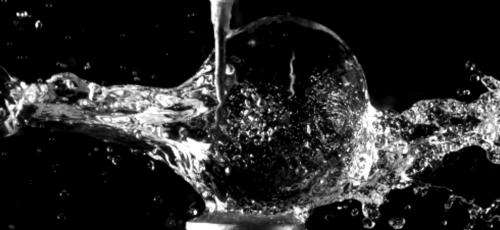How bubble studies benefit science and engineering

The image above shows a perfect bubble imploding in weightlessness. This bubble, and many like it, are produced by the researchers from the École Polytechnique Fédérale de Lausanne in Switzerland. What makes this bubble so perfect is that it is produced in a weightless environment, which means it is not deformed by gravity. These research bubbles are the most spherical known to science at this time.
The study of bubbles and the way they explode will have ongoing benefits for space and industry. Air pressure ensures that liquids stay just that: liquids. Bubbles are produced when liquids change state into gases. For instance, on mountain tops—where we have considerably less air pressure—water is able to boil, changing state into a gas, at a lower temperature.
In the vacuum of space, there is nothing to slow down the production of bubbles, so in space when liquids experience sudden pressure drops, a process called 'cavitation' can occur where bubbles form in the hydraulic systems of machines.
During the very fast and violent collapse of cavitation bubbles, their energy is expelled in jets and shocks, which can cause wear and tear in industrial machines and rocket pumps.
These are just two areas where knowing more about the physics of bubbles would help design better machines. To understand bubbles better, it helps to have a perfect model of them for observation.
On Earth, gravity pushes and pulls liquids, turning round bubbles into 'egg' shapes. Parabolic flights allow researchers to escape gravity for around 20 seconds at a time in special aircraft performing rollercoaster-like parabolic manoeuvres.
The team from Ecole Polytechnique Federale de Lausanne shines lasers on pure water and captures the bubbles on camera as they form and implode in a matter of less than a millisecond.
There is positive potential in the bubbles too. Harnessing the energy that liquid bubbles give off as they implode could be a novel source of energy in the future.
One example that researchers are working on is producing very localised heat on demand by creating and imploding bubbles with ultrasound. This technique could activate heat-sensitive drugs in the future, turning them on in very specific parts of your body, to make sure they work where needed most.
The future is bubbling with potential.
Provided by European Space Agency




















